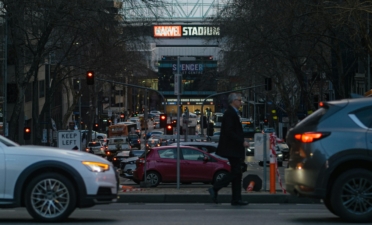As we prepare for 2023, we reflect on our mobility journey so far and the opportunities which lie ahead for Australia. Recently, I had the opportunity to attend and present at Australia’s leading conference on micromobility, which brings together thought leaders from government and industry to share data, trends and market insights.
Reflecting on the insights shared, micromobility has a key role to play in shaping Australia’s broader mobility and transport landscape. This is especially true for governments and local councils who see it as one of the doorways to reducing congestion, lowering emissions and improving the health and wellbeing of communities.
While the term micromobility is still relatively new, the modes of transport it encompasses including traditional bikes, e-bikes, cargo bikes and e-scooters are now the driving force behind Australia’s shift towards more sustainable and active forms of transport. These micro modes of transport – especially cycling – will succeed because they are accessible and low cost, but that is not to say there are no barriers in the way.
Four wheels over two
Today, the car remains the dominant mode of transport in Australia with 64 per cent of people choosing to drive to work – compared to 16 per cent opting to take public transport and just 2 per cent cycling. These figures stand in contrast to European countries like Finland in which 35 per cent of commuters take public transport and 25 per cent cycle.
Research tells us that some people choose not to cycle because they perceive it as time-consuming, inconvenient, physically strenuous or unsafe. Plus, many towns and cities lack the appropriate infrastructure to support safe cycling.
The latest data shows over 80 per cent of cyclists ride a bike for recreation, but only a third use bikes for transport. To increase uptake in cycling, we need to make it safer and more accessible to all, and technology is key to breaking this barrier for new or unconfident cyclists.
Technology influencing behaviour
Mobility-as-a-Service presents a significant opportunity – especially for governments and local councils looking to encourage cycling and more active forms of transport. MaaS solutions work by integrating different modes of transport and journey planning services to make end-to-end multi-modal transport as seamless, accessible, and convenient as possible.
We believe that MaaS can change the perception and reality of cycling in Australia. This has been proven in the development of our safer-cycling application ridePlan – part of our Omniway MaaS platform.
ridePlan helps users plan and optimises bike journeys, providing turn-by-turn navigation, voice guidance and the option of choosing the quietest, flattest or fastest route. ridePlan’s unique safety algorithm also accounts for road infrastructure, such as bike lanes, and different road surfaces.
Governments embracing MaaS
ridePlan was developed for Transport for NSW and recently trialled by Merri-bek City Council in Melbourne. In partnership with eBike startup Lug + Carrie, it was trialled by parents at three inner-city primary schools. Forty riders used the app to conduct school drop-offs and pick-ups over a four-week period.
Working with Intelematics’ software engineering team, ridePlan was customised for users with pre-loaded home, school and work destinations to make the adoption of the service easier for trialists.
Seventy-five per cent of Merri-bek trial participants said they typically drove their kids to school, but the trial helped to open their eyes about the potential of doing the school run by bike. Merri-bek is now hoping to roll out the trial to more schools. Another key outcome has been Lug+Carrie’s formal adoption of ridePlan to all new and existing customers.
Data to inform decision making
Our experience has shown how technology can improve safety, provide optimal cycling routes, and change people’s perceptions of cycling. The key to this has been the development of user-centric technology which provides choice, such as giving users the ability to choose routes based on their own personal preference.
Personalising our software led to behaviour change, which if widely adopted, could lead to significant benefits, including alleviating pressure on infrastructure or increasing uptake of safer routes.
ridePlan is just one application, which demonstrates the power of MaaS and the potential of Omniway to support behaviour change at scale – if applied to multiple modes of transport, connecting journey planning and other services across public, private, shared and micromobility.
For governments and local councils looking to understand the potential of MaaS solutions, ridePlan is an easy entry point. Importantly, the data generated can be used as a baseline to inform and support transport-related planning and decisions.
Looking forward, micromobility will play a vital role in shaping how we travel, but the benefits of increasing active transport in our cities and towns will only be realised through the adoption of complementary MaaS technologies, which in tandem, enhance user experience and generate critical decision-making data.





